We might be a small spot in the universe, yet the Earth is as yet a huge spot. With huge man-made designs and goliath normal ponders, there’s a lot of fabulous sights that can be seen from the space stations circling the Earth. From the world’s greatest streams and mountains to antiquated pyramids, we take a gander at the most extraordinary sights on earth that can be seen from space.
- The Great Pyramids of Giza, Egypt

The Great Pyramids of Giza are known as the largest, oldest and one of the most attractive places on earth. Its burial was created by the Ancient Egyptians about 4,500 years ago. It was one the oldest of the seven wonders of the ancient world and these can also be seen from space. People found a way to see them from outside.
In 2001 NASA astronautics captured first photographed. We can see three pyramids, but the Great Pyramid of Pharaoh Khufur is the most fascinating. Its height is about 146 meters. It is set on 755 square feet of land. It took about 20 years to build and about 1 lakh workers. The pyramid was built with huge pieces of stone. Each piece of stone weighed about 60 tons, and was about 30 to 40 feet long. These were collected from distant hills.
2. The Grand Canyon, USA
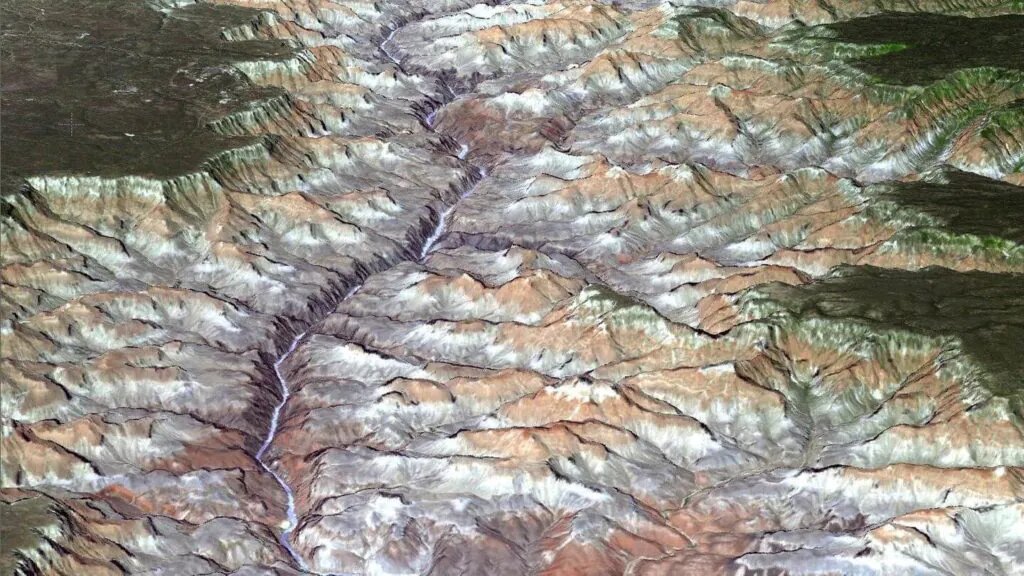
The Grand Canyon is a canyon in the US state of Arizona. The Colorado River flows through this canyon. … The Grand Canyon is 277 miles long, 18 miles wide, and 1 mile deep. The geological process and timing of the formation of the Grand Canyon is a matter of debate to geologists. Recent research, however, suggests that the Colorado River began flowing through the Grand Canyon at least 18 million years ago. If you wanted to see the entirety of the Grand Canyon, you would have to climb every last bit of this 446-kilometer-long gorge in Arizona. In any case, the space travelers of space will see everything all at once. The Grand Canyon is so immense it resembles a twisting stream from space.
It is one the oldest of the seven wonders of the Natural World. If you wanted to see the entirety of the Grand Canyon, you would have to climb every last bit of this 446-kilometer-long gorge in Arizona. In any case, the space travelers of space will see everything all at once. The Grand Canyon is so massive it takes after a winding stream from space.
3. The Himalayas
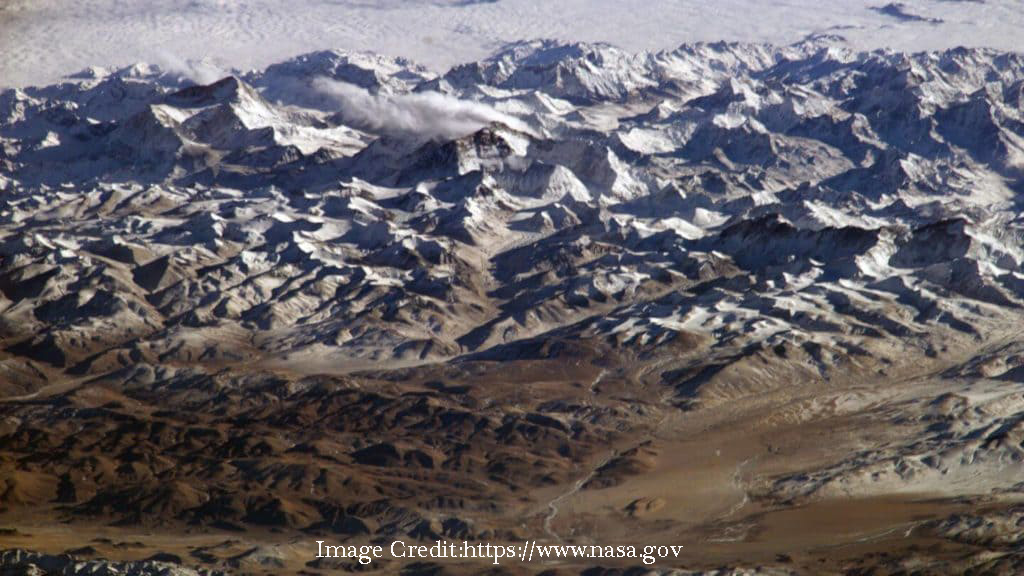
The Himalayas are highest mountain range in the world. It is not a single class or rosary, but rather a continuous class, placed long distances in almost parallel streams to each other. Again somewhere the two streams have merged into one. In the meantime, there are innumerable valleys, overgrowths and dunes scattered. The Himalayan range and its impenetrable peaks, including the famous Mount Everest (6,848 m), Mount K2 (6,610 m), and Kanchenjunga (6,575 m), have risen from the plains to the base of the low mountain range. The motion of some of these mountains is transverse or horizontal to the main Himalayan belt.
The well-known mountain range covers around 75% of Nepal and furthermore extends across China, Bhutan, India and Pakistan. These frigid pinnacles give probably the most stunning perspectives on the planet, however they’re similarly as excellent from the universe.
4. Great Barrier Reef, Australia
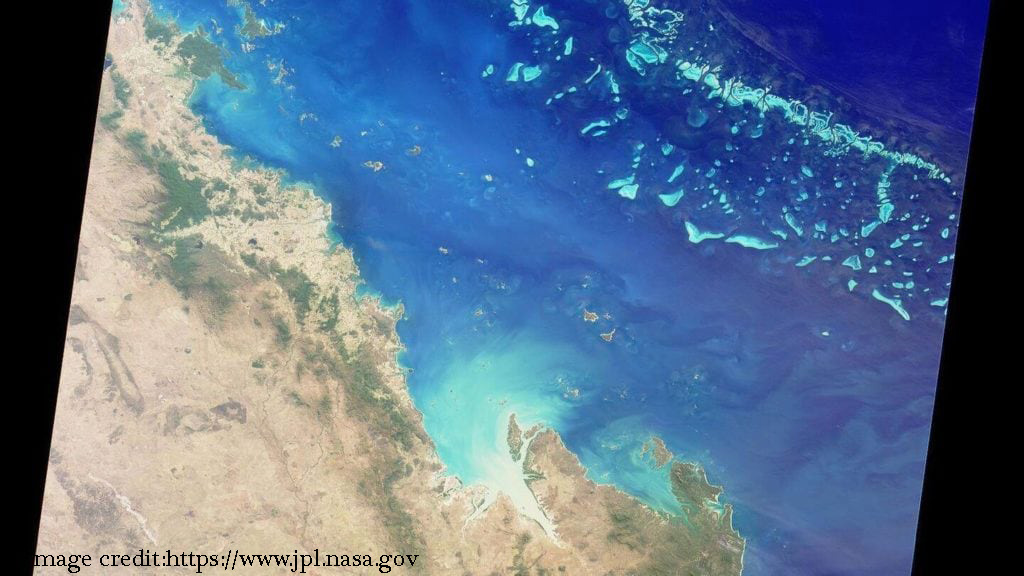
The Great Barrier Reef, Australia is the longest coral reef in the world and one of the Seven Natural wonders of the word, consisting of more than 2,500 single reefs. The awesome reef extends for over 2,600km and is comprised of more than 900 islands.
There are many living things here, it was included in the World Heritage Site in 1981. CNN declares the coral reef one of the world’s natural wonders. The Queensland National Trust declares the reef a symbol of the state of Queensl land. NASA has shown us that the Great Barrier Reef and its hallucinogenic tones are similarly as dazzling from space.
5. Amazon River
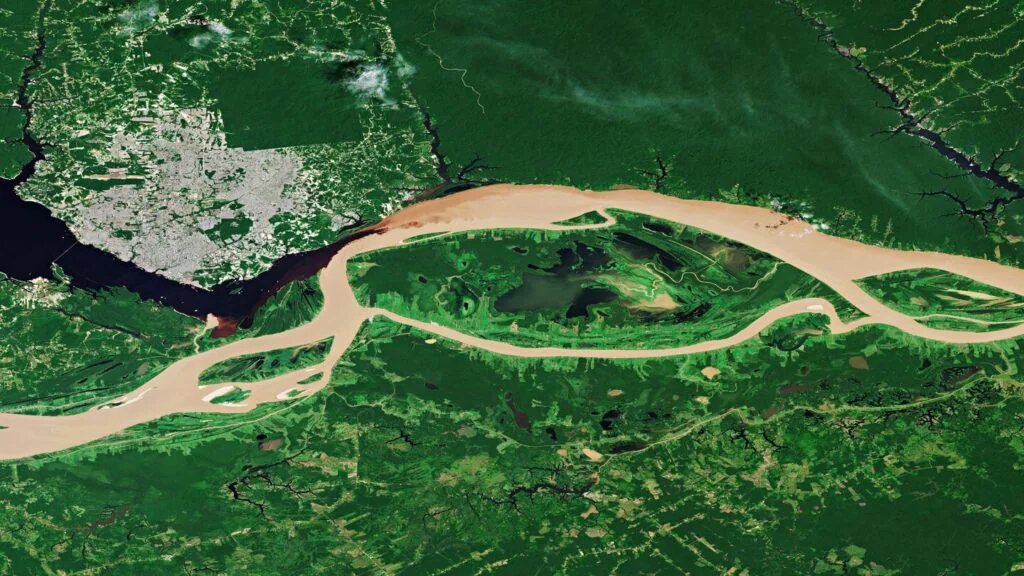
The Amazon River is located in South America and is the second longest river after Nile in the world. Its source is the Nevado Mis?mi peak in the Andes Mountains of Peru. The Amazon River travels nearly 3,000 miles across South America, sweeping through three countries into the Atlantic Ocean.
This river holds more water than any other river in the world. Where the Amazon River flows into the ocean, 4.2 million cubic feet of water falls into the ocean every second. During the monsoon season this amount goes up to about 6 million cubic feet. It is so longest that camera cannot capture the whole river. Satellite picture of it looks like a sand-coloured snake against the deep blue and green of the lowland Amazon forest. It’s particularly apparent when the waterway floods its feeders.
- Palm Island, Dubai
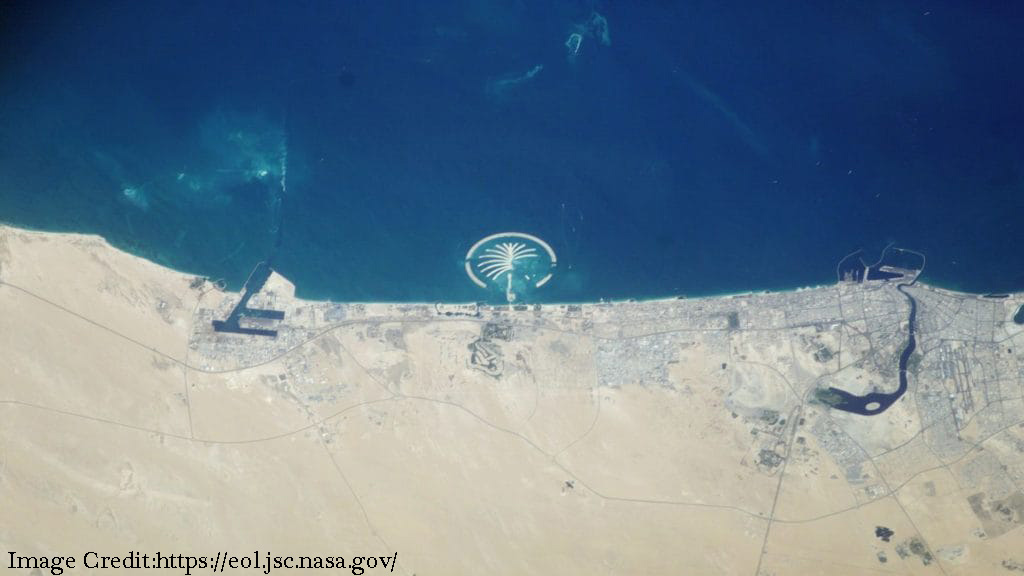
The impressive city of Dubai is acclaimed for its luxury – and the Palm Islands surely satisfy the standing. Lying off the shoreline of the United Arab Emirates, the Palm Islands are one of the world’s most aggressive designing tasks. They are intended to comprise of three fake islands – Palm Jumeirah, Palm Jebel Ali and Deira Island.
Construction started in 2001, however just Palm Jumeirah has been finished and it would already be able to be seen from space. It’s the world’s biggest counterfeit island, worked from around 110 million cubic meters of sand. The island is molded like a palm tree finished off with a bow and it’s accepted that the leftover islands will be formed like the close planetary system. So the space travelers will be taking a gander at space from space.
7.Ganges River Delta
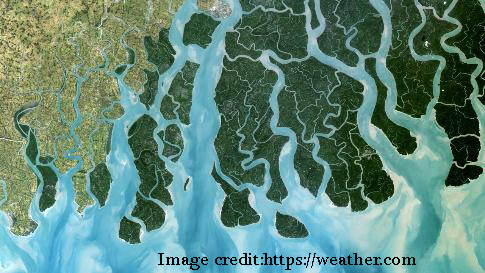
The world’s biggest delta makes for a staggering perspective from the circles of Earth. The Ganges extends for almost 350 kilometers across India and Bangladesh and is the final living space of the Bengal tiger. It’s however socially critical as it seems to be naturally, and it’s the site of numerous heavenly services and celebrations.
The Maha Kumbh Mela celebration is held at regular intervals and brings a huge number of individuals each day to the journey site in Allahabad. It’s the world’s biggest strict celebration and is enormous to the point that space travelers can see the hordes of individuals from space.
8. Greenhouses of Almería, Spain
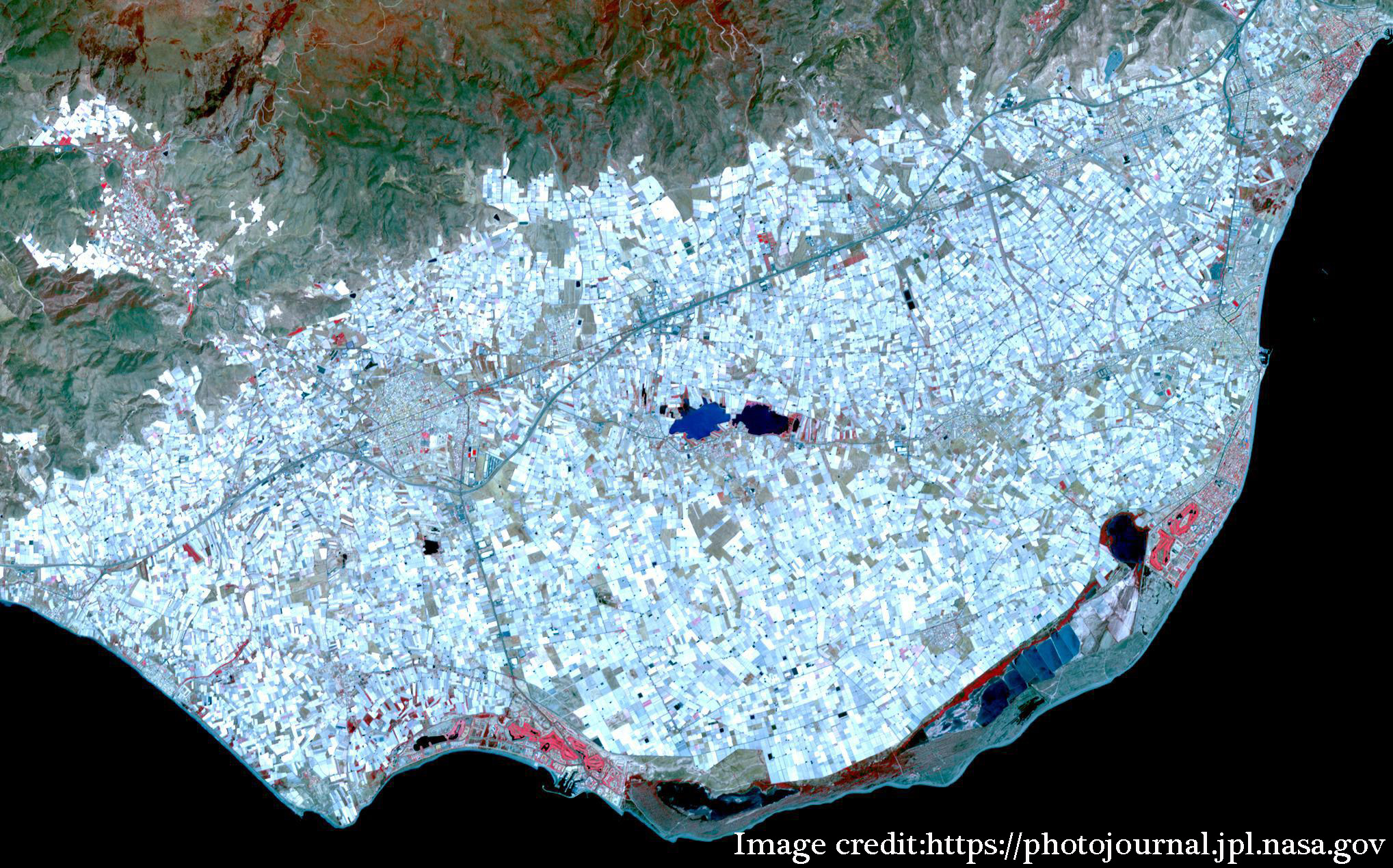
Covering right around 30,000 hectares, the Greenhouses of Almería in Spain are the world’s biggest convergence of nurseries. The ocean of plastic nurseries reflects amazing daylight in the daytime and can be seen unmistakably from space.
They produce almost 3.5 million tons of leafy foods every year, so on the off chance that you’ve at any point eaten a piece of organic product, odds are it came from Almería. It’s a disgrace the space travelers in circle can’t radiate up a tomato or two.
9. River Thames, United Kingdom
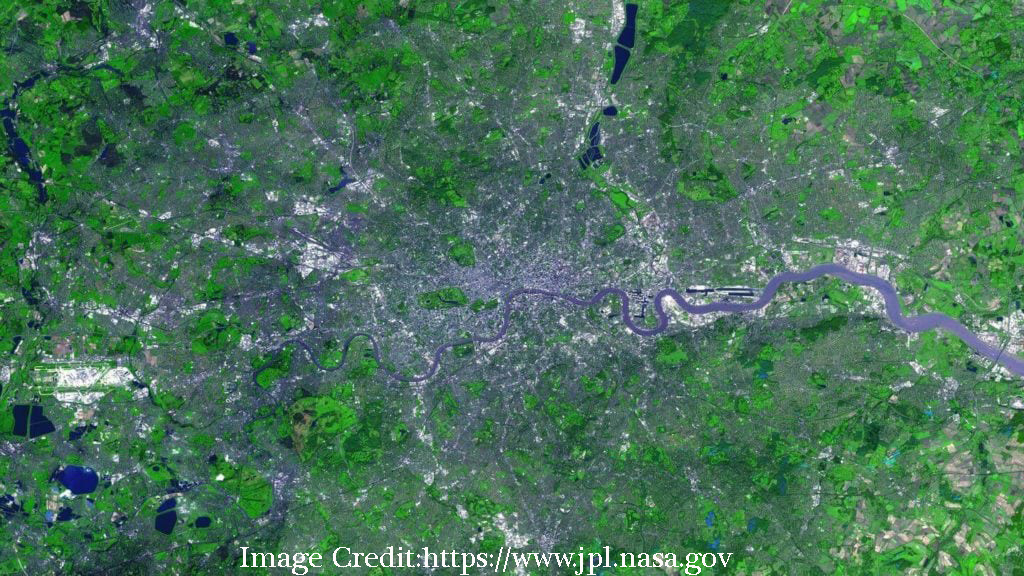
The River Thames is perhaps the most renowned waterways on earth – and in space. At the point when space travelers float over London, they can see the notorious waterway twisting through the city.
The Thames has a length of around 14,250 square kilometers and is almost 29 kilometers at its vastest. So regardless of whether you take a boat visit along the Thames, or see it from space, this monstrous stream makes certain to intrigue.
10. Kennecott Copper Mine, USA
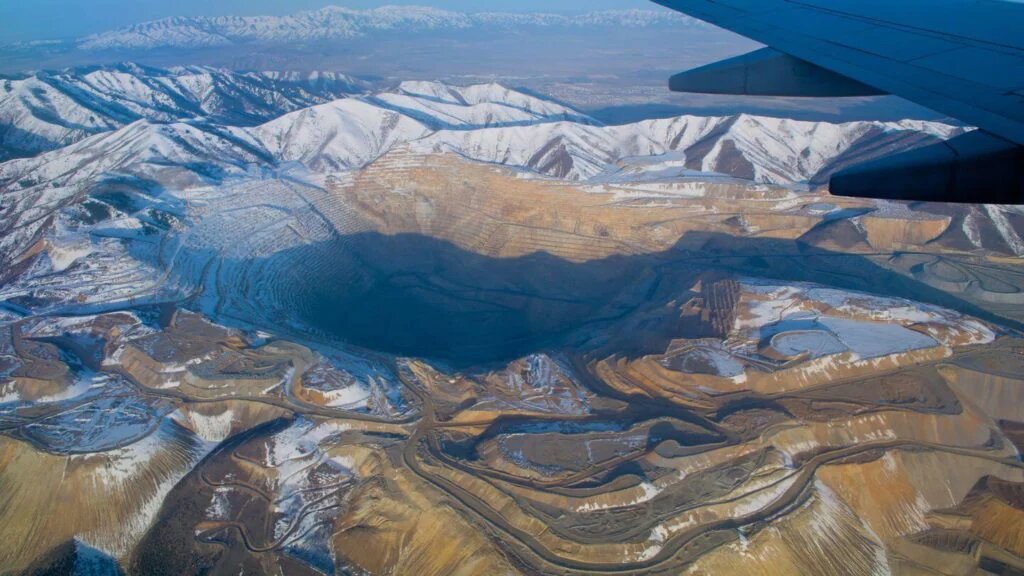
The Kennecott Copper Mine in Utah is one of the biggest open-pit mines on the planet and is so huge it’s noticeable from space. The mine is more than four kilometers wide and 1.2 kilometers high – which is taller than two Empire State structures stacked on top of one another.
Kennecott has been in activity for more than 100 years. It is accepted to have created more copper than some other mine, with an uncommon 19 million tons. The tremendous pit is relied upon to continue to grow until 2030.
11. Cities at night
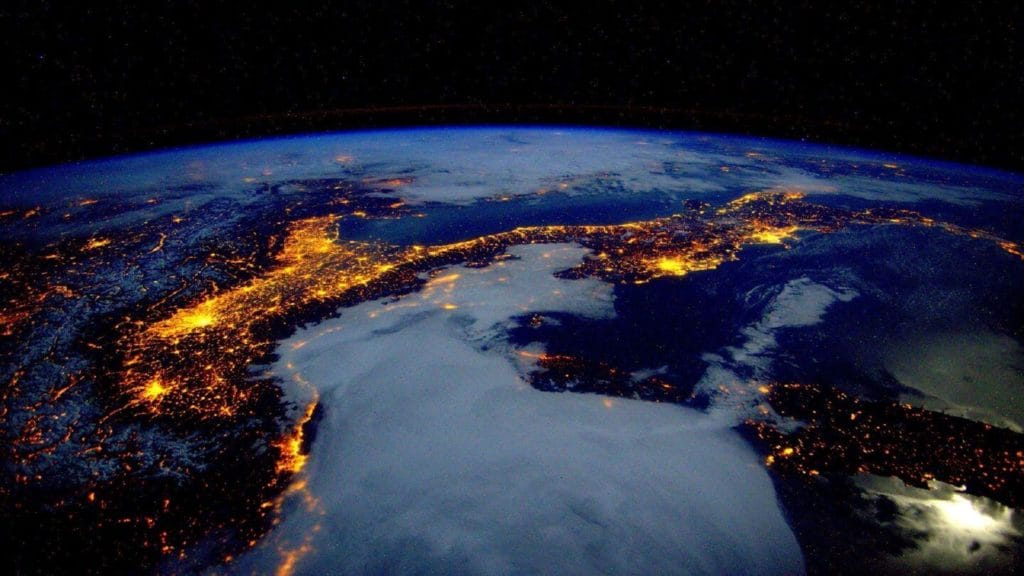
The world’s urban areas enlightened around evening time make for some really lovely satellite pictures. Space explorers can distinguish a large portion of the world’s huge urban communities around evening time, with tremendous spaces of land illuminated like a Christmas tree. The fake lights are so brilliant; they appear to make their own heavenly body.
The absolute most apparent spots are Belgian expressways, with 335,000 lights on 150,000 light posts, while dearest urban areas like London, Paris, Tokyo and San Francisco appear as though a warm orange shine on the world’s surface.
